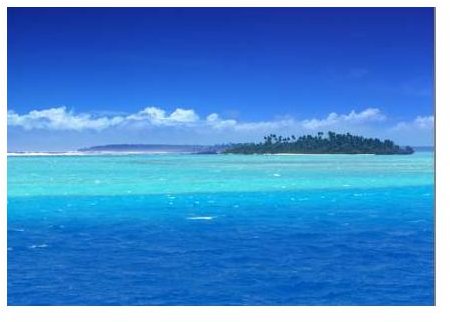Why is the Ocean Blue?
Introduction
The sight of a clear blue sea is genuinely a soothing one, inducing not only mental calmness but also an intriguing question as to why is the ocean blue in color, while the glass of water that you had just before leaving your home was colorless. The color of the sea has always been a topic for endless debates, often leading to inconclusive results.
It’s being said that water has an intrinsic blue color, result of its molecular and chemical structure. But the color is so mild that it isn’t really visible. It is also felt that the color of water changes the way we look at it, which is partially true. The confusion increases when the same blue ocean water when freezes turn milky white ice.
The Reasons
The surface of the water is smooth,shiny and reflective, these characteristics of water play a vital role in making the sea look blue. Apart from this, the main reasons that makes the ocean appear blue are enumerated below. It is not just one of these factors that contribute in making the ocean appear blue, but all these factors work simultaneously for such result.

Ocean reflects the color of sky
As mentioned earlier, water is a shiny and reflective fluid. If you stand at the shore and look at the horizon you will see the reflection of the sky. It’s said that one of the reason the sea appears blue is that it just reflects the sky color. This is partially true. If you have ever seen the sunset standing at a beach, you will find the sea water color orange. This is just the sea water reflecting the light of the sun.Thus the sea just acts as a mirror.
But there are other factors such as the depth of the sea, condition of sea and the living organisms present in the water.
Blue Wavelengths are absorbed the least
The sunlight is made up of seven colors, the colors we see in a rainbow. The second reason says that the water molecules make the sea look blue. It is a known fact that the way wavelengths of colors are reflected from a surface depends on the composition of the material through which it is made to pass. The sea water molecules trasmits maximum of the blue wavelengths and that is the reason why the blue color is reflected the most. Red color wavelengths is absorbed the most by the sea water. The next wavelength after blue that is reflected the most is of green color and that is why the ocean sometimes appear green. At greater depths, blue color is comparatively transmitted less in amount and thus the water apears a bit colorless. Ripples and soft waves also scatter the blue wavelengths in different directions making the sea look more blue to us.
Sediments and Marine organisms affect the color
Sometimes the sea appears to be green. It is believed that this is due to the plant life and the river water mixing with the ocean. When such thing happens, more of blue light is absorbed and the yellow pigments of the green plants make the reflected blue light appear green. It is also noticed that after a storm or a rough sea condition, the sea water turns brown. This is mainly due to the unsettled muddy sediments and sand particles that are churned up by wind and water currents.
